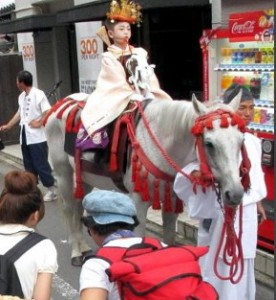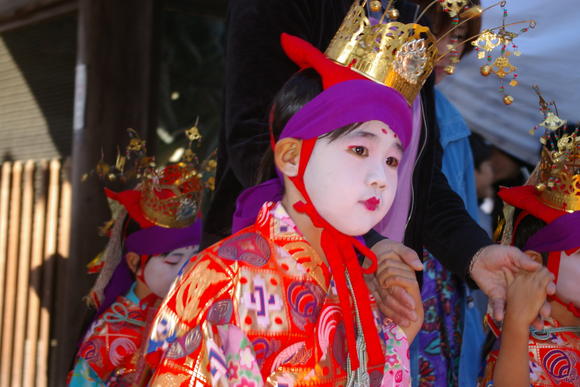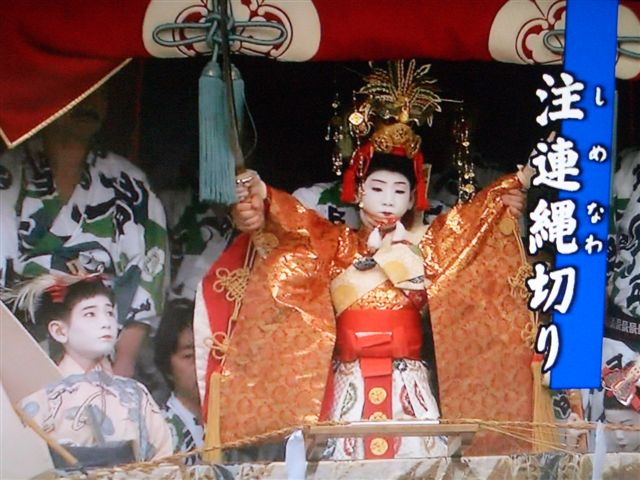As we come up towards the main events in the Gion Festival on July 15-17, we’ll be hearing more about the figure at the centre of proceedings – the young boys known as chigo. What are these mysterious white-faced boys representing exactly?
The best information I’ve found on the subject is on Gabi Greve’s extensive Daruma Museum website, from which the extracts below are taken.
*******************************

A white horse-riding chigo
Chigo, small children 稚児. Originally, the word means babies who are still nursing 乳子(ちご.
They are also the children who perform certain duties in a temple, nowadays mostly dancing and taking part in a parade.
In former times also a name for the boys who served in temples and at the mansions of the royalty and lords.
chigo 稚児 catamite
young boys as sexual partners for men
In Japan young children are regarded as “other worldly” and not fully anchored in human life. Fetuses are still referred to as kami no ko or “child of the gods” and also as “Buddha”. Before the twentieth century, the probability that a child would survive to age five or seven was often less than 50 percent. Only after that age were they “counted” in a census and could they be “counted upon” to participate in the adult world.
Children were thought of as mysterious beings in a liminal world between the realm of humans and gods. Because of this the gods could speak through them. For centuries prepubescent children in Japan have been chosen as chigo, or “divine children”, who do divination and function as oracles. Even today children below school age still are allowed a somewhat heavenly existence, indulged and protected without many expectations or pressures.



Leave a Reply